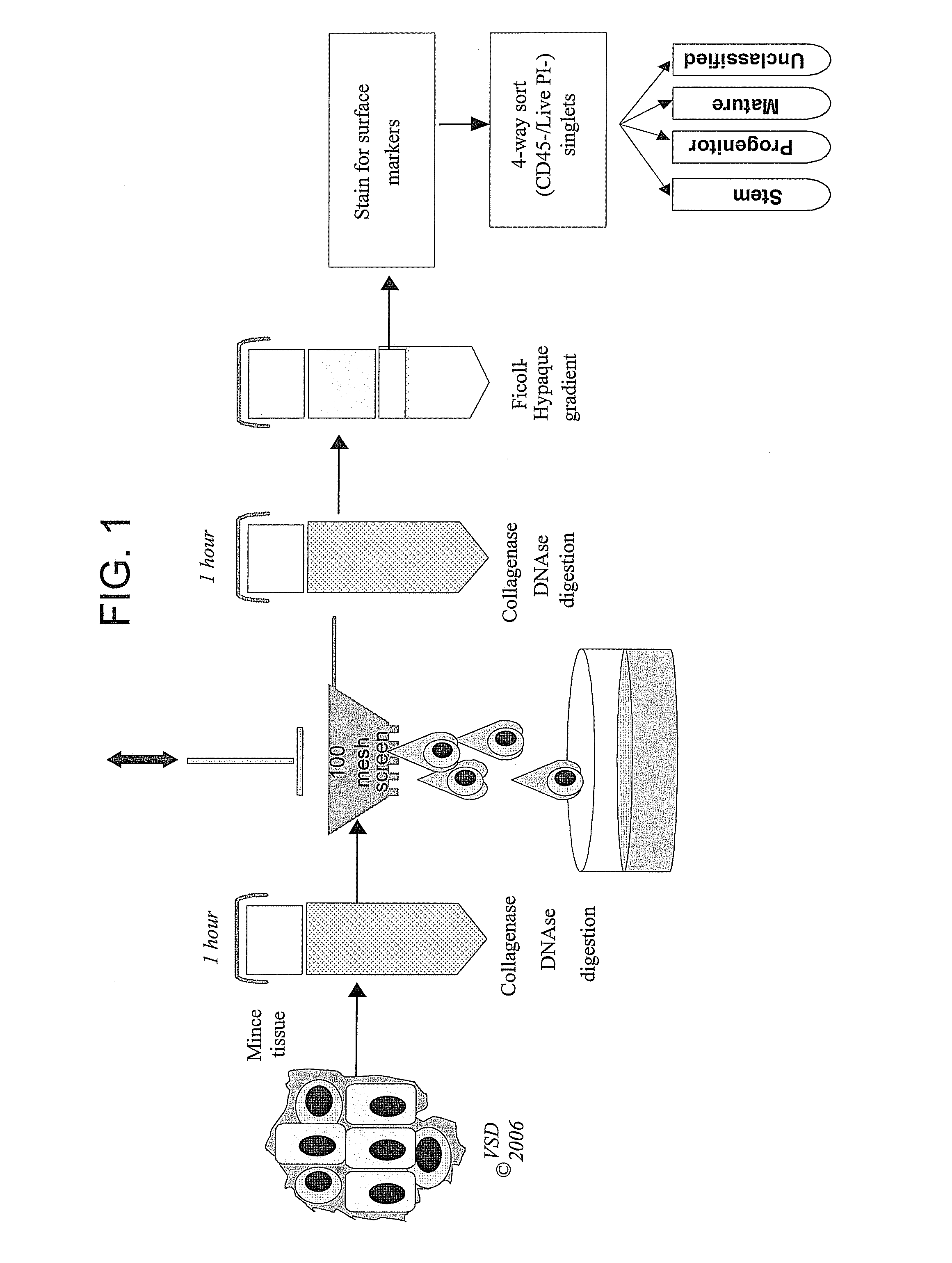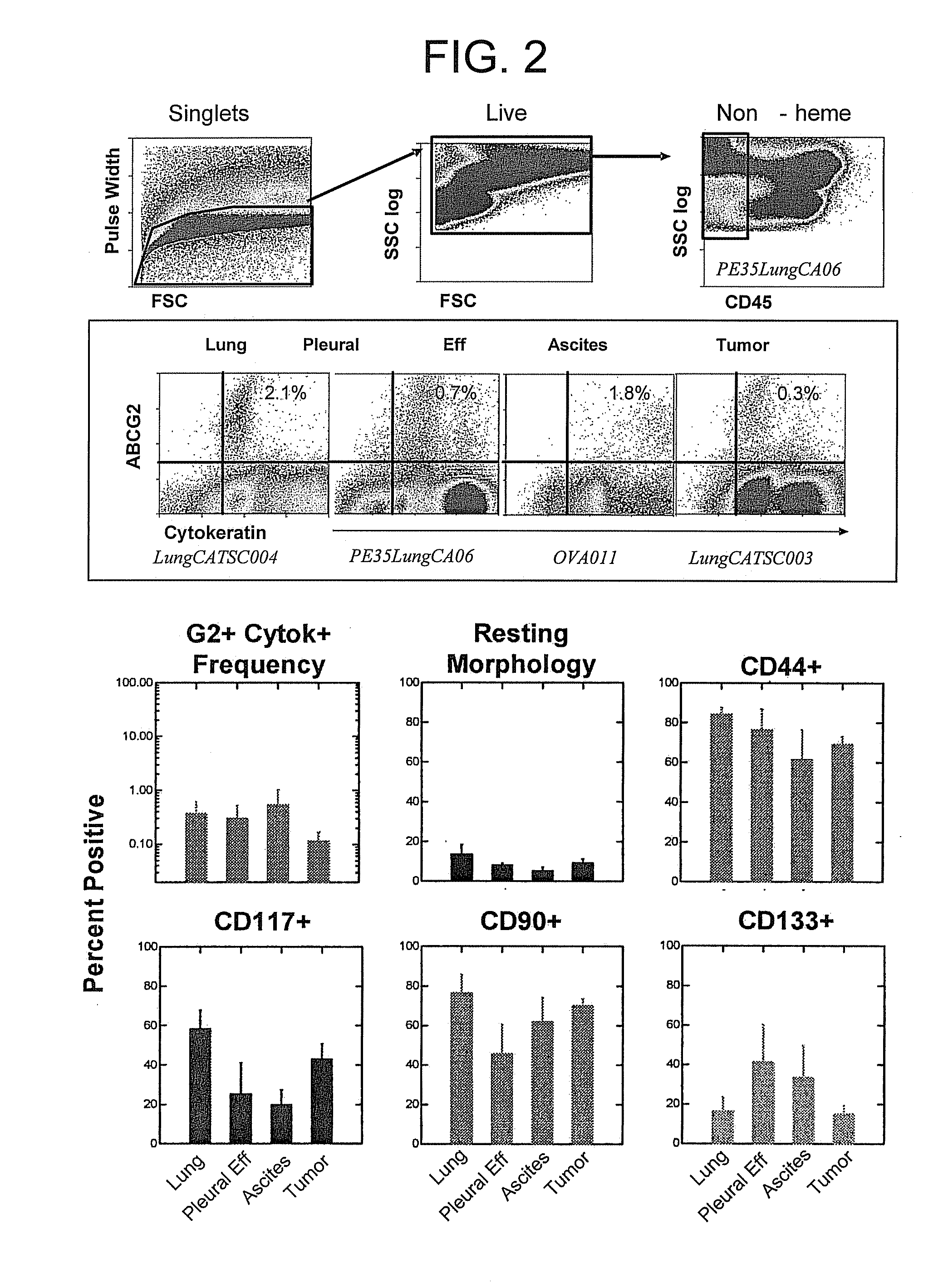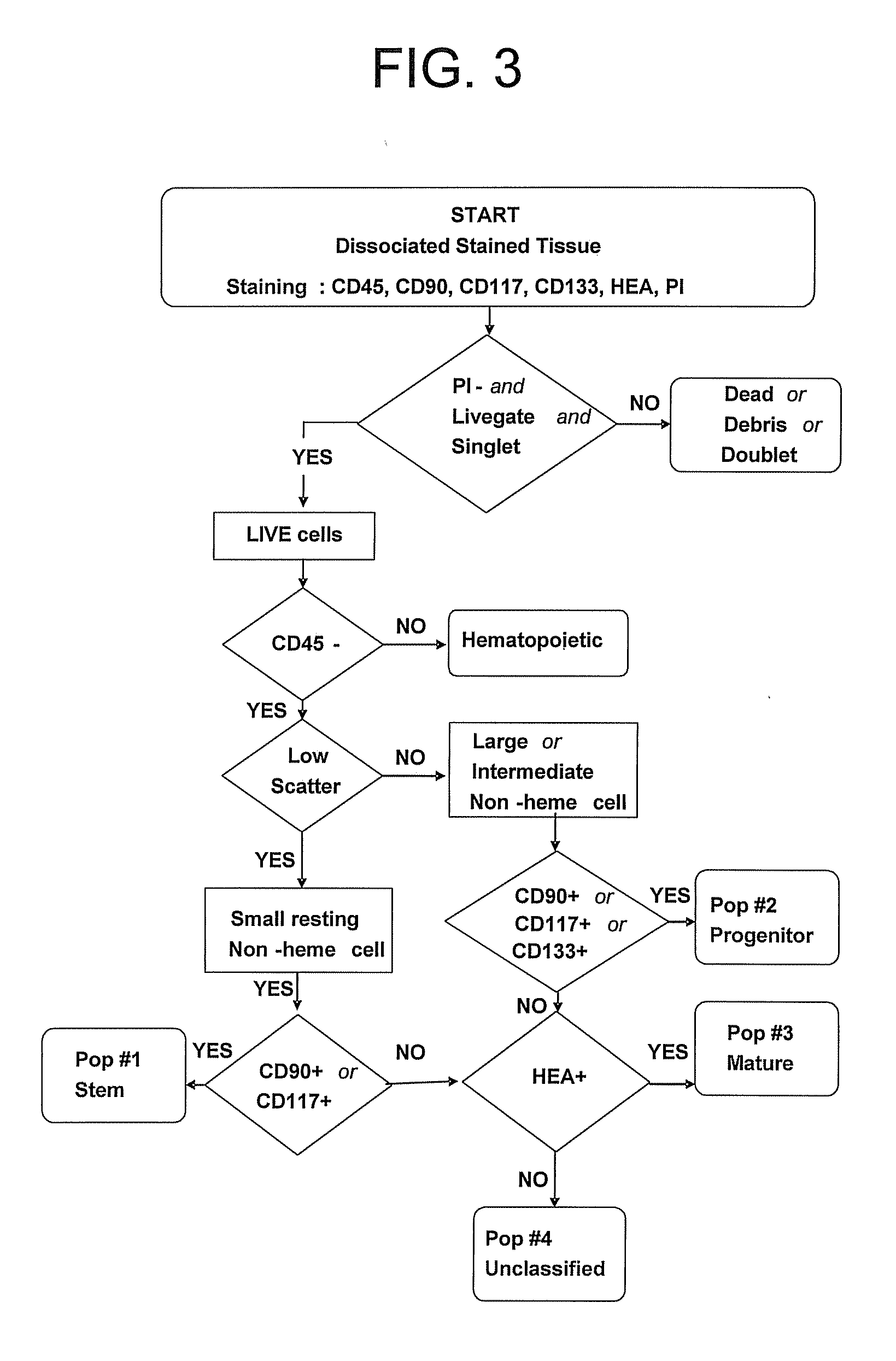Identification of a constitutively resistant cancer stem cell
a cancer stem cell, constitutively resistant technology, applied in the direction of tumor/cancer cells, artificial cell constructs, instruments, etc., can solve the problems of not being able to identify mdr cancer cells prior to treatment, and existing technology not affording a method of identifying such cells
- Summary
- Abstract
- Description
- Claims
- Application Information
AI Technical Summary
Problems solved by technology
Method used
Image
Examples
example 1
[0037] This example demonstrates the isolation and identification of MDR cancer stem cells.
[0038] A biopsy is obtained from a tumor or normal tissue of a human patient. From the biopsy, single cells are stained with dye-conjugated monoclonal antibodies (CD45, CD44, CD90, CD117, CD133, and ABCG2) for identification (or purification) by flow cytometry. Stained cells are cultured in the presence of fluorescent MDR substrates Rhodamine 123 and Hoechst 33342 for 15-90 min. A viability dye (propidium iodide, DAPI, 7AAD) is added immediately prior to flow cytometry. The population of interest is identified by the following criteria: 1) Live (propidium iodide excluding); 2) Singlet (by forward light scatter pulse analysis; 3) Non-hematopoietic (CD45 negative); 4) CD44+; 5) CD90 or CD117 positive; 6) MDR expression and / or activity by the following criteria: ABCG2+; Rhodamine 123 or Hoechst 33342 transport.
[0039] The inventive method has been employed to identify MDR cancer stem cells in ov...
example 2
[0041] This example demonstrates an application of the inventive method for identification and isolation of cancer stem cells with constitutive drug resistance.
[0042] Tissue Procurement. Freshly isolated tumor and normal tissue specimens are transported to the laboratory immediately after surgical excision for processing.
[0043] Tissue Digestion. Solid tissues are minced and digested with collagenase and disaggregated through 100 mesh stainless steel screens (FIG. 1) or alternatively by mechanical means alone. Between about 10-500 million viable cells can be isolated from a 5-10 mm3 specimen of tumor or normal lung parenchyma. Pleural effusions and ascites are concentrated, collagenase digested and separated on a ficoll / hypaque gradient. Cells also can be cryopreserved, for example, in medium containing 20% serum and 10% DMSO and held in liquid nitrogen. Disaggregated tissue cells can withstand such cryopreservation with no detectable loss of clonogenicity.
[0044] Staining and flow...
example 3
[0050] In this Example, the following definitions and abbreviations are employed: [0051] putative tumor stem cell (TS), [0052] tumor progenitor cell (TP), [0053] mature tumor (TM) cell populations, [0054] normal epithelial stem (NS), [0055] normal progenitor (NP), and [0056] normal mature (NM) cells. [0057]“Stem cell” indicates a cell with a normally resting state (G0), and the properties of self-protection and self-renewal (high capacity for serial passage). [0058] A “progenitor cell” is understood to be the immediate progeny of the stem cell and have high proliferative capacity, but exhibits no self-protection and little self-renewal (cannot be serially passaged). [0059]“Mature cells” are those that are unable to proliferate. This paradigm is not universal, but appears to hold in normal epithelial tissue (Alonso L, Fuchs E. Stem cells of the skin epithelium. PNAS 100 (suppl 1): 11830-11835, 2003).
[0060] Detection of stem and progenitor cells in normal fetal and adult lung parench...
PUM
| Property | Measurement | Unit |
|---|---|---|
| time | aaaaa | aaaaa |
| drug resistance | aaaaa | aaaaa |
| frequency | aaaaa | aaaaa |
Abstract
Description
Claims
Application Information
 Login to View More
Login to View More - R&D
- Intellectual Property
- Life Sciences
- Materials
- Tech Scout
- Unparalleled Data Quality
- Higher Quality Content
- 60% Fewer Hallucinations
Browse by: Latest US Patents, China's latest patents, Technical Efficacy Thesaurus, Application Domain, Technology Topic, Popular Technical Reports.
© 2025 PatSnap. All rights reserved.Legal|Privacy policy|Modern Slavery Act Transparency Statement|Sitemap|About US| Contact US: help@patsnap.com



